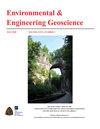Impact of global warming on average annual air temperature in Varaždin
IF 0.7
4区 工程技术
Q4 ENGINEERING, ENVIRONMENTAL
引用次数: 0
Abstract
Climate change implies a statistically significant change in the long-term mean state or characteristics of the variability of climate elements. It can be caused by natural and/or anthropogenic factors. Recent global warming is often cited as an example of human-induced climate change. Global warming refers to the increasing trend of the average global surface temperature of the Earth, defined as the global average of the mean annual surface temperature of the ocean, usually to a depth of 30-100 cm, and the mean annual surface temperature of the air above the land at a height of 1-2 m above the ground. In 1988, the World Meteorological Organization (WMO) and the United Nations Environment Program (UNEP) established the International Panel on Climate Change (IPCC), which assesses the state of the climate and the risk of climate change caused by human activities.To project climate change, it is necessary to determine the future emissions of greenhouse gases in the atmosphere. According to the IPCC, with appropriate scenarios of greenhouse gas emissions, an increase in the average global surface temperature of 1.5 °C to 4 °C is predicted by the end of the 21st century. The purpose of this paper is to show the relationship between the trend and variability of the global average of the mean annual surface temperature on Earth and the trend of the mean annual air surface temperature in Varaždin for the period 1949-2021. The results show significant correlations among them because Varaždin is located in an big area of surface air temperature anomalies which has a significant contribution to a global average anomalies in several last decades.全球变暖对Varaždin年平均气温的影响
气候变化意味着气候要素变率的长期平均状态或特征在统计上的显著变化。它可以由自然和/或人为因素引起。最近的全球变暖经常被引用为人为引起的气候变化的一个例子。全球变暖是指地球的全球平均表面温度的上升趋势,定义为海洋的年平均表面温度的全球平均值,通常达到30-100厘米的深度,以及离地面1-2米高度的陆地上空空气的年平均表面温度。1988年,世界气象组织(WMO)和联合国环境规划署(UNEP)成立了国际气候变化专门委员会(IPCC),负责评估气候状况和人类活动引起的气候变化风险。为了预测气候变化,有必要确定未来大气中温室气体的排放量。根据政府间气候变化专门委员会,在适当的温室气体排放情景下,预计到21世纪末,全球平均地表温度将上升1.5°C至4°C。本文的目的是展示1949-2021年期间地球年平均表面温度的全球平均值与Varaždin年平均空气表面温度的趋势和变率之间的关系。由于Varaždin位于对近几十年全球平均异常有重要贡献的大面积地表气温异常区,结果表明它们之间具有显著的相关性。
本文章由计算机程序翻译,如有差异,请以英文原文为准。
求助全文
约1分钟内获得全文
求助全文
来源期刊

Environmental & Engineering Geoscience
地学-地球科学综合
CiteScore
2.10
自引率
0.00%
发文量
25
审稿时长
>12 weeks
期刊介绍:
The Environmental & Engineering Geoscience Journal publishes peer-reviewed manuscripts that address issues relating to the interaction of people with hydrologic and geologic systems. Theoretical and applied contributions are appropriate, and the primary criteria for acceptance are scientific and technical merit.
 求助内容:
求助内容: 应助结果提醒方式:
应助结果提醒方式:


